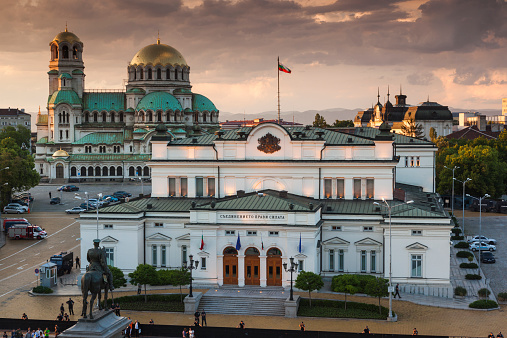Quick facts
- Population: 9,879,000 (2014)
- Capital: Budapest
- Geographical size: 93,024 km2
- GDP: € 97.948 billion (2013)
- Official EU language(s): Hungarian
- Currency: Hungarian Forint HUF
Higher education in Hungary
- Number of higher education institutions: 68
- Number of students in higher education: 380,800 (2012, Euromonitor International from national statistics/UNESCO)
- Number of international students in higher education: 17,520 (2012, UNESCO)
- Language of instruction: Most higher education programmes in Hungary are taught in Hungarian language but you will find many taught in English, German and other languages (e.g. Russian, French, etc.)
- Typical tuition fees: Tuition fees vary from around 500 to 6000 Euros per semester (a semester is half an academic year). Tuition fees may differ depending on the field of study and the level of degree. It should also be noted that international students from EU and non-EU countries can be granted different scholarships.
- Average length of a full-time higher education programme in Hungary:
- Bachelor’s degree programme: 3-4 years
- Master’s degree programme: 1-2 years
- Doctorate/PhD: 3-5 years
Overview
Hungarian higher education has represented academic excellence for more than 600 years. There are 68 higher education institutions in Hungary, ranging from top research universities to small, specialised colleges.
Hungary joined the Bologna process in 1999. The Hungarian Act on Higher Education was inspired by the objectives of the Bologna process and all main fields of study have been restructured in accordance with the new, three cycles degree system to help prepare students for the labour market and for lifelong learning.
Many universities are situated in Budapest, which is the capital of Hungary and the country’s main political, cultural, commercial, industrial and transportation centre. Half of Hungary’s university students study in the capital, and the majority of professors work here, too. The proportion of researchers working in the city is even higher.
There are many well-known universities in cities outside Budapest too; Debrecen is home to the University of Debrecen, whose main building is a widely recognised work of architecture. The university has many departments and is a major research centre in Europe, hosting many international students.
The University of Szeged was founded in 1872 and consists of 12 faculties, where you can study almost everything ranging from humanities to business studies or health sciences.
The University of Pécs is the oldest university in Hungary and ranks among the first European universities. It has 10 faculties and offers a wide range of training programmes covering nearly every possible field of study.
Hungary is one of the 15 most popular tourist destinations in the world, with a capital regarded as one of the most beautiful cities.
Despite its relatively small size, Hungary is home to numerous World Heritage Sites and UNESCO Biosphere Reserves; is famous for its rich cultural tradition and hosts many cultural events and festivals; and is also known for being the country of origin of many Nobel laureates.
The cost of living is relatively low in Hungary and thanks to its location, Hungary is a perfect base if you are looking to explore many countries in Europe!











The first line of Lorem Ipsum, “Lorem ipsum dolor sit amet..”, comes from a line in section 1.10.32.
The standard chunk of Lorem Ipsum used since the 1500s is reproduced below for those interested.
The standard chunk of Lorem Ipsum used since the 1500s is reproduced below for those interested.
Sections 1.10.32 and 1.10.33 from “de Finibus Bonorum et Malorum” by Cicero are also reproduced in their exact original form, accompanied by English versions from the 1914 translation by H. Rackham.
The standard chunk of Lorem Ipsum used since the 1500s is reproduced below for those interested.